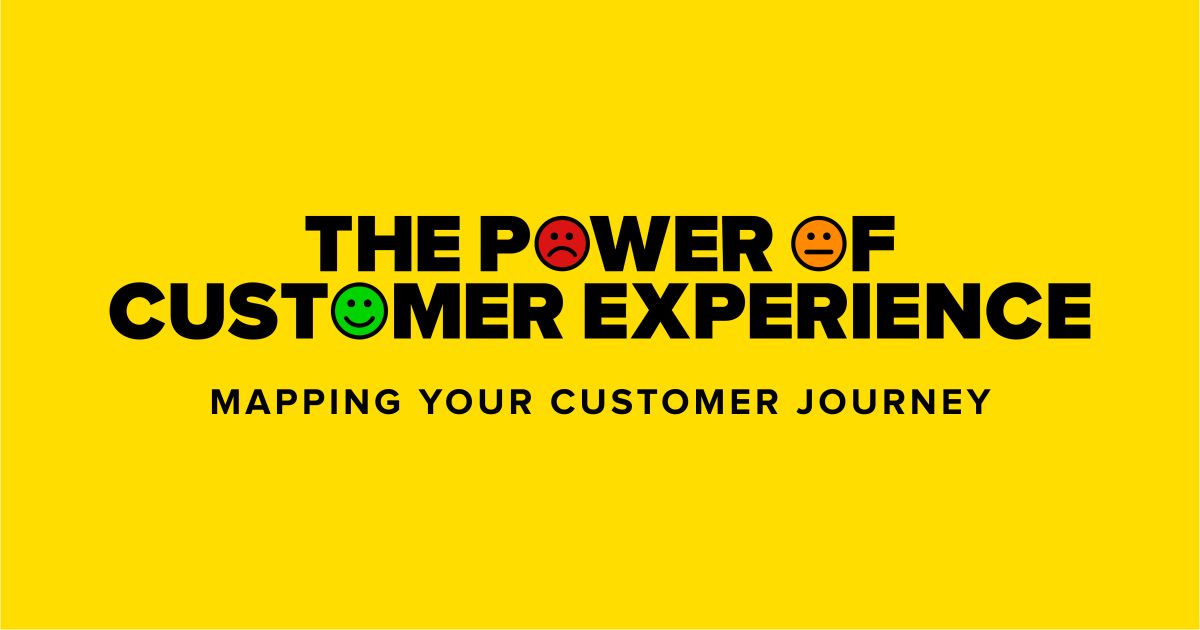As Holly explained in her recent blog, customer experience (CX) is the most effective way to strengthen your brand. Considering that 86% of consumers quit doing business with a company if they have a negative experience, there’s no doubt that improving CX can positively impact your brand.
If better CX is the final destination, where do you begin, and how do you get there? By mapping the customer journey. The customer journey describes the full experience that customers have when they interact with your company, business, organization, product, or brand. A customer journey map identifies and visualizes the decision points and obstacles customers encounter when they interact with you.
The ideal customer journey is very simple—it’s a one-to-one relationship with your customer, defined by three steps:
- A customer engages with your business, brand, product, or service.
- Your internal team (typically marketing and sales) qualifies the customer.
- The customer makes a purchase decision (i.e., converts).
In reality, the customer journey is much more complex. As your customer navigates the customer experience, they battle daily distractions, information overload, advertising noise, and their own emotions, worries, and concerns. But even though your customer’s journey may be circuitous, the method for mapping it is pretty straightforward.
Step 1: Know Your Customers
I can hear you saying, “We don’t need to do research, we know everything there is to know about our customers”—but keep in mind, you understand your customers through your filter. The voice of the customer is essential to accurately mapping the customer journey. How to capture it? Through research.
Your research doesn’t need to be exhaustive (at LMD, our mantra is “some research is better than no research”) and it can come in many forms, such as interviews, focus groups, social listening, website and social analytics, and CRM and sales data.
Step 2: Create Customer Personas
Using your findings from Step 1, you can create empathy-based customer personas—semi-fictitious archetypes representing key customer segments that reveal your customers’ psychographics, including:
- What do your customers think and feel? What matters to them, and what are their major preoccupations, worries, and aspirations?
- What do they hear? What do their friends say? Do they listen to influencers? Whose voice do they deem to be credible—or not?
- What do they see? What’s in their environment and in their market?
- What do they say or do? How do they present themselves to the world—and how to they act toward others?
- What are their “pains and gains”? What frustrates them or stands in their way—and what do they want and need?
Step 3: Map the Touchpoints
Now that you’ve done your research and developed empathy-based customer personas, it’s time to create a customer journey map (or maps—you may need to create multiple maps for different customer segments) that identifies all the touchpoints. A touchpoint is any time a customer interacts with your brand—before, during, and after they buy from you; online or offline; through marketing or sales; in person, over the phone, or virtually.
Be sure to map all touchpoints when creating your journey map—no matter how small. Even a seemingly insignificant touchpoint (e.g., a customer not being able to find a contact phone number on your website) can have a significant impact (e.g., that customer leaves your website and never comes back). By mapping all the touchpoints, you won’t miss any opportunities to improve the customer experience.
To map the touchpoints, look at the task from your customers’ point of view. Use the findings from your research to put on your “customer hat” and ask yourself, “Where do I go and what do I do when”:
- I have a [problem that your product/company solves]?
- I become aware of a product or business that solves my problem?
- I make my purchase decision?
- I interact with the business again after I buy?
Use the answers to create a visual map of the customer journey.
Creating customer journey maps can be a fun and illuminating experience. Need help with creating a customer journey map? Contact us.

